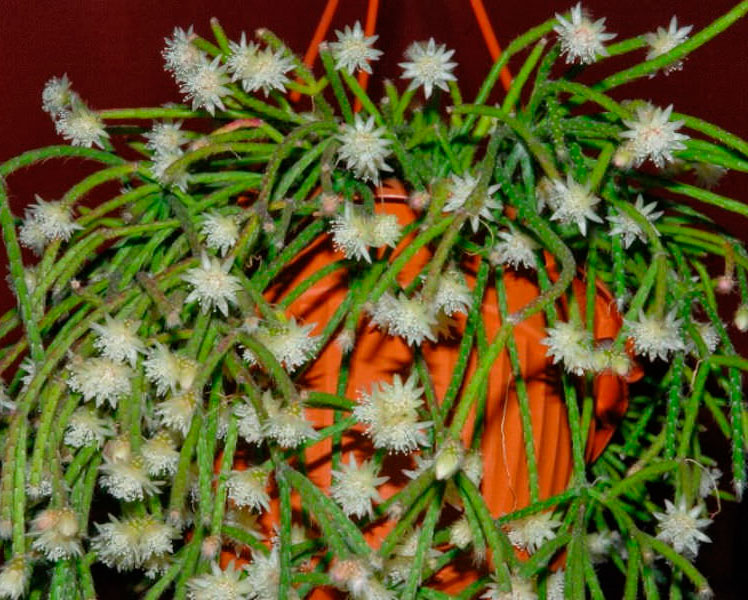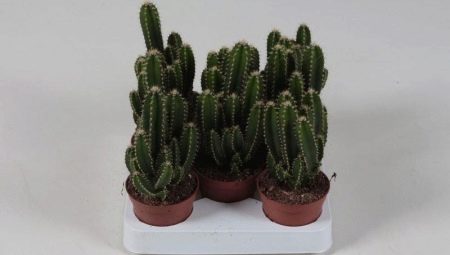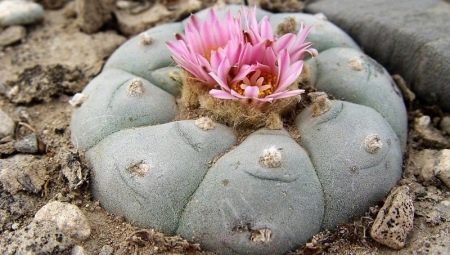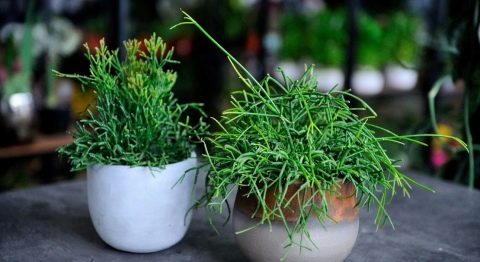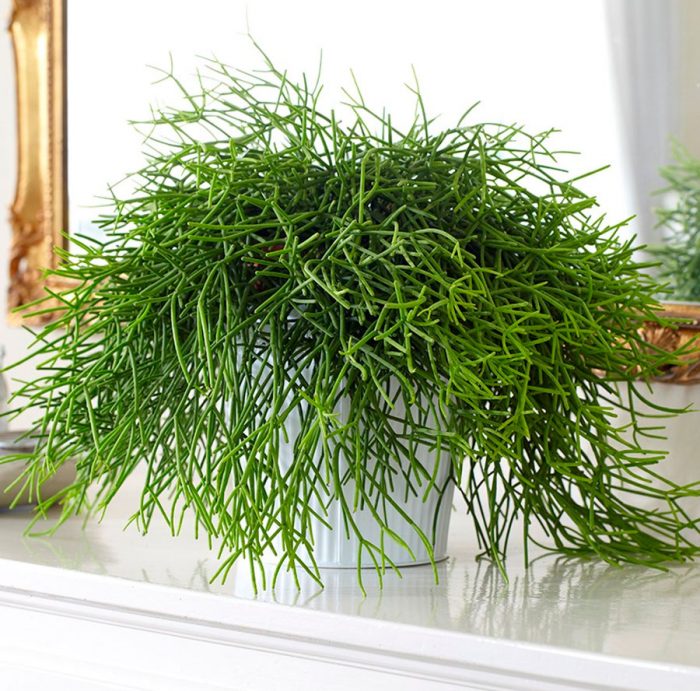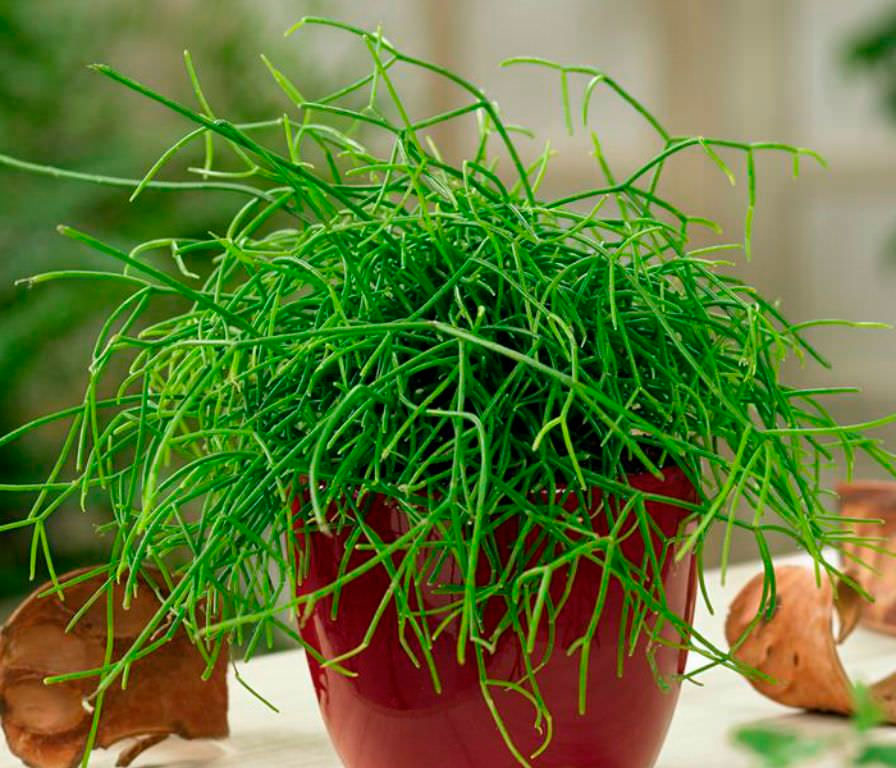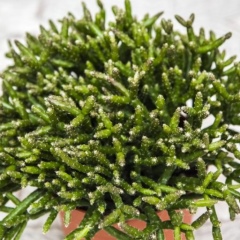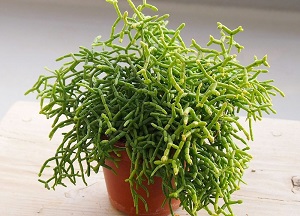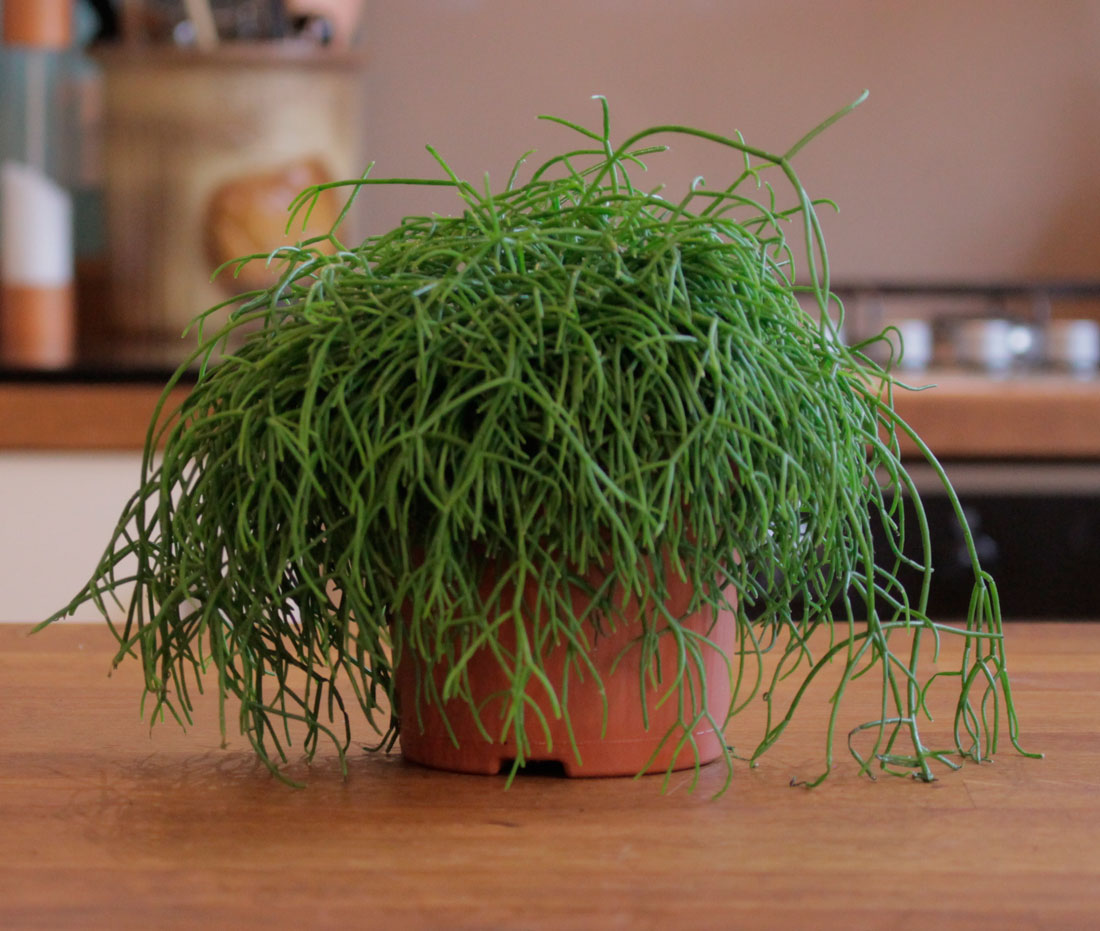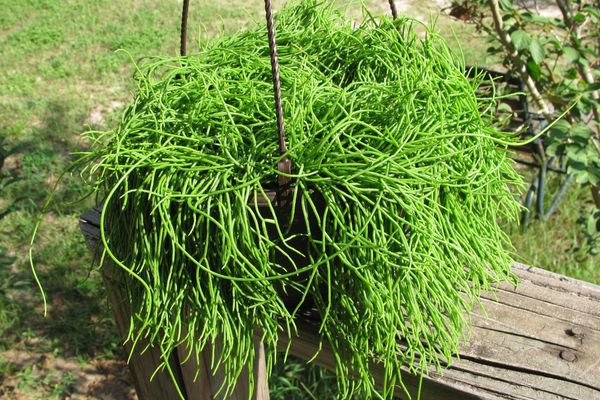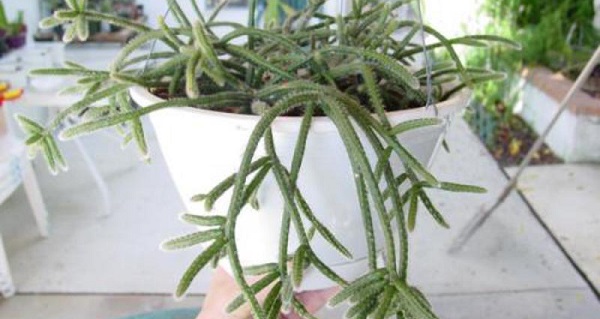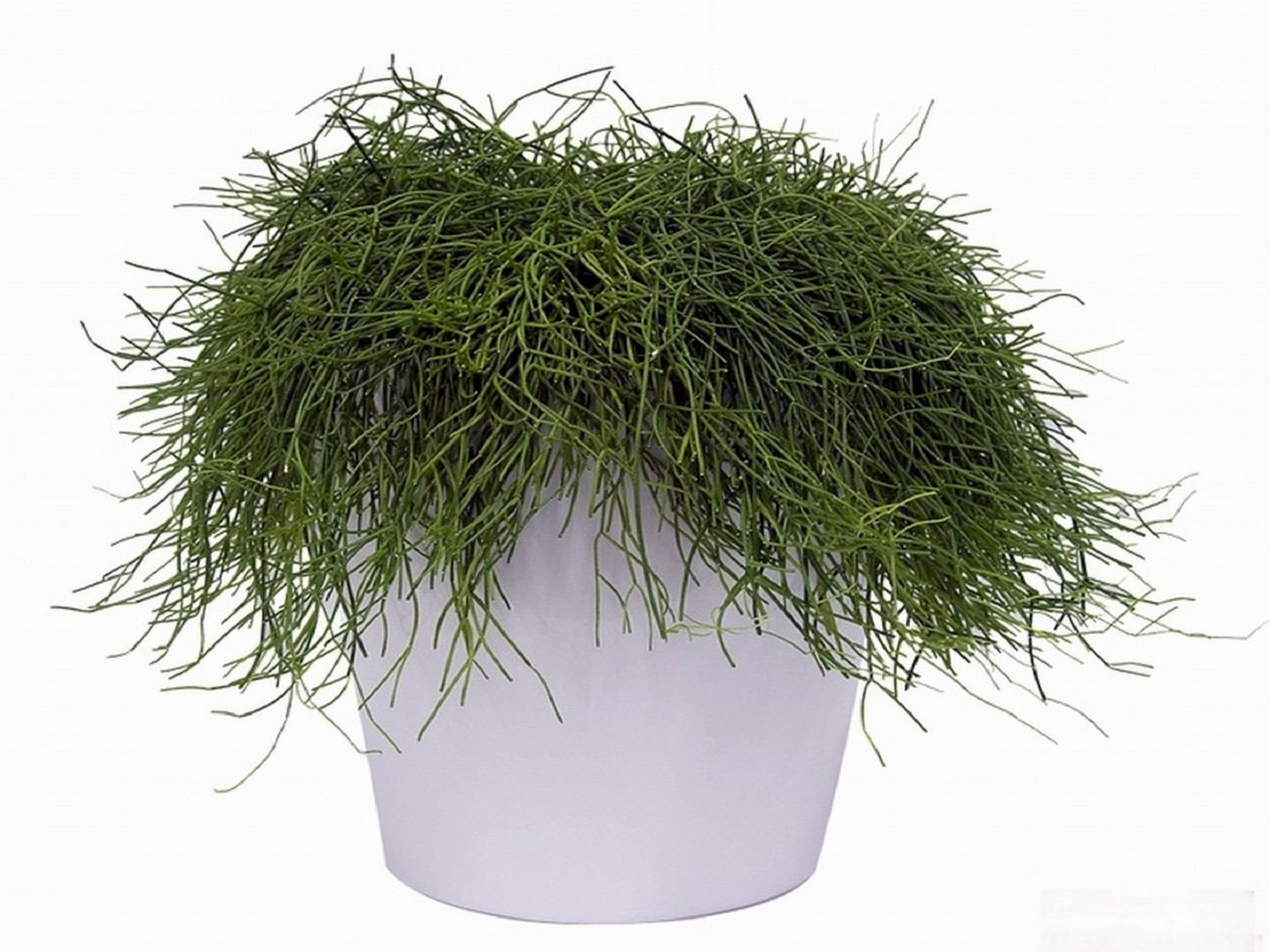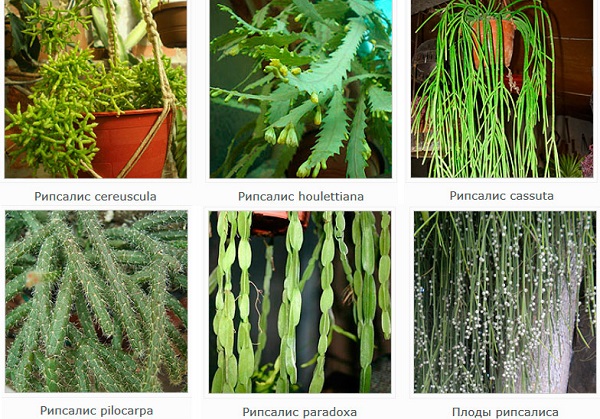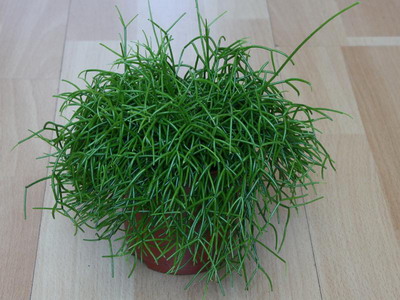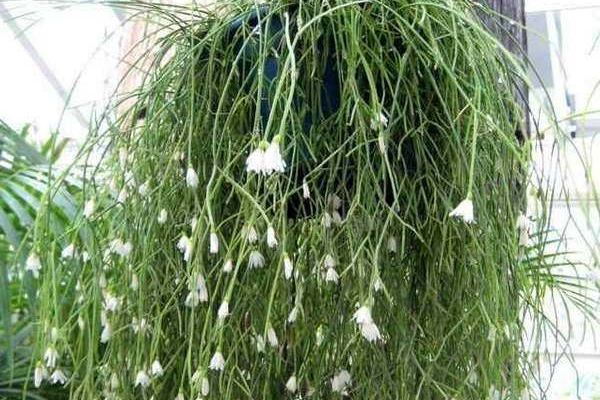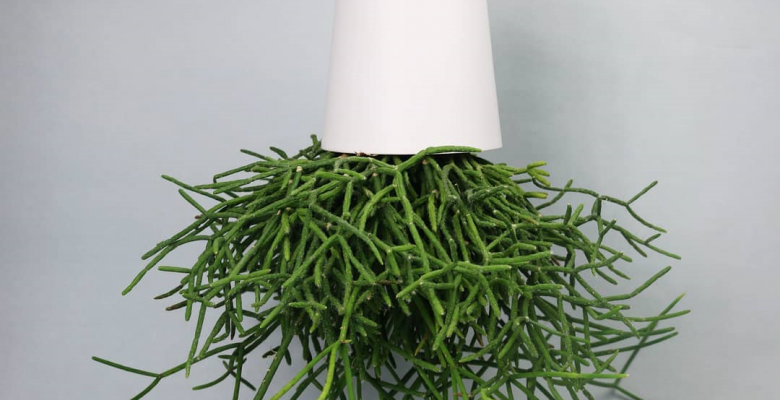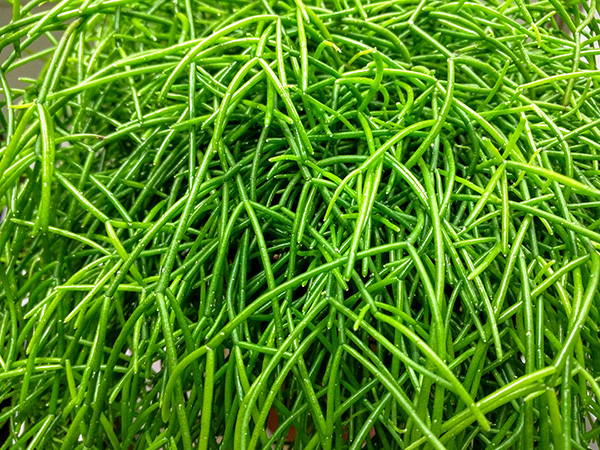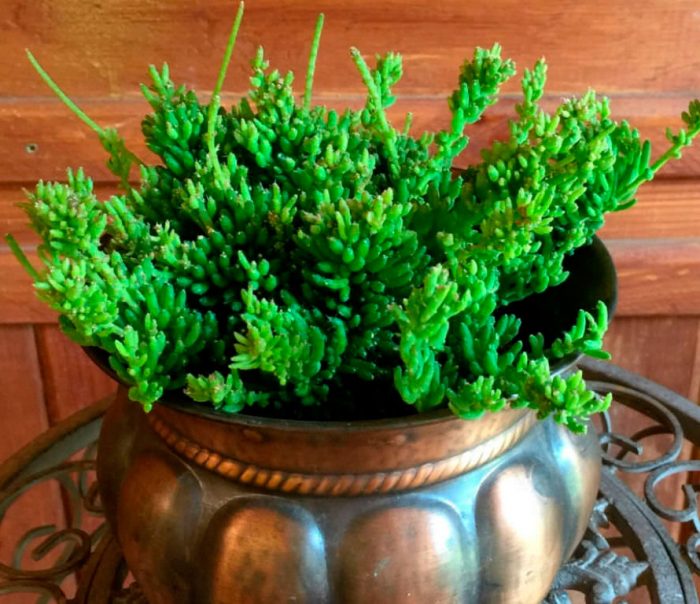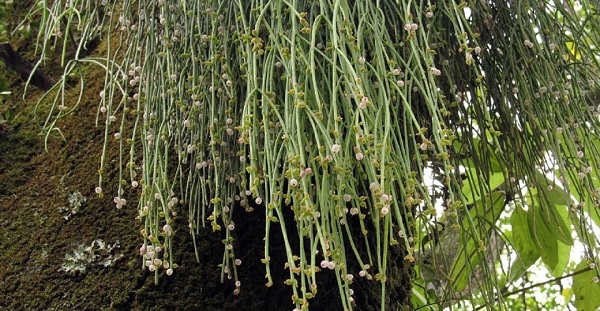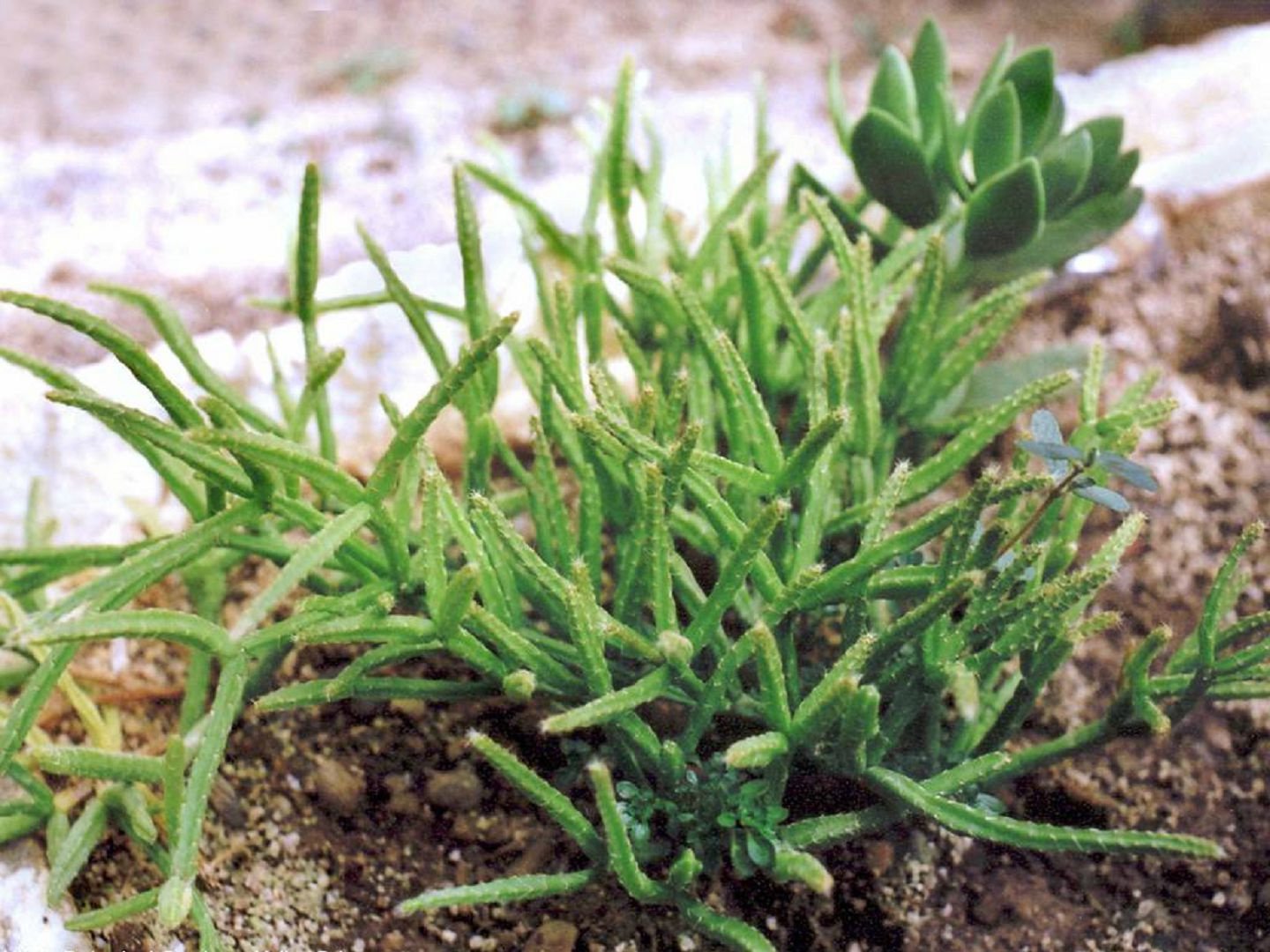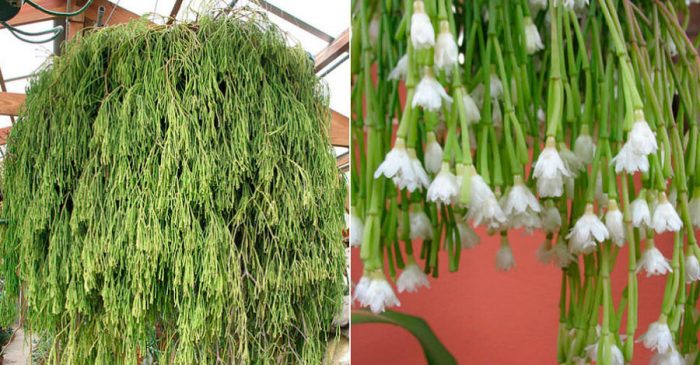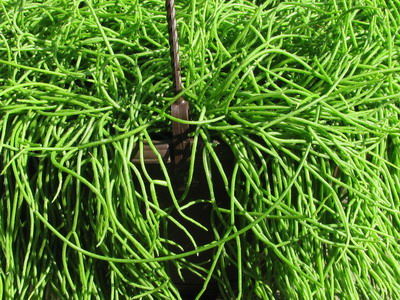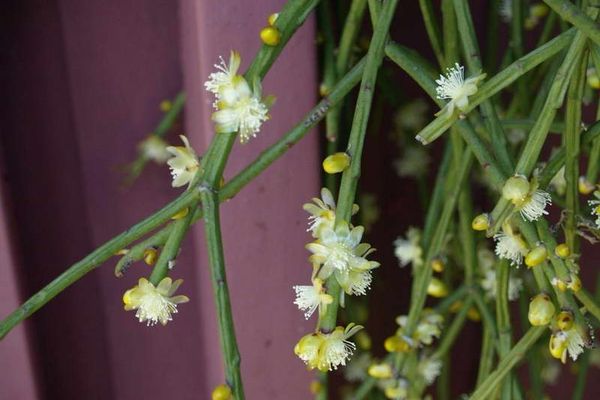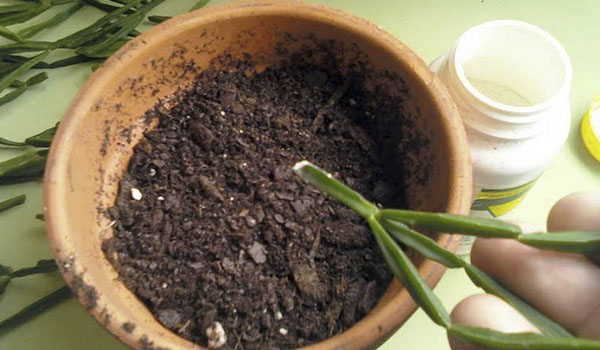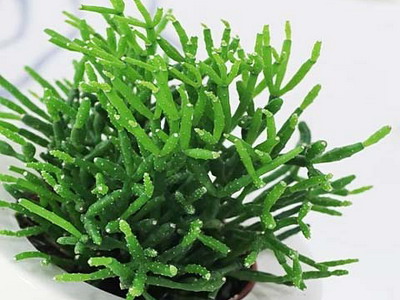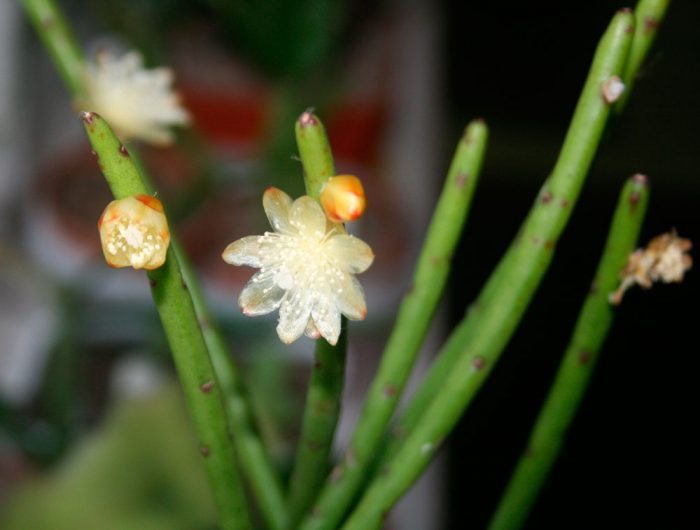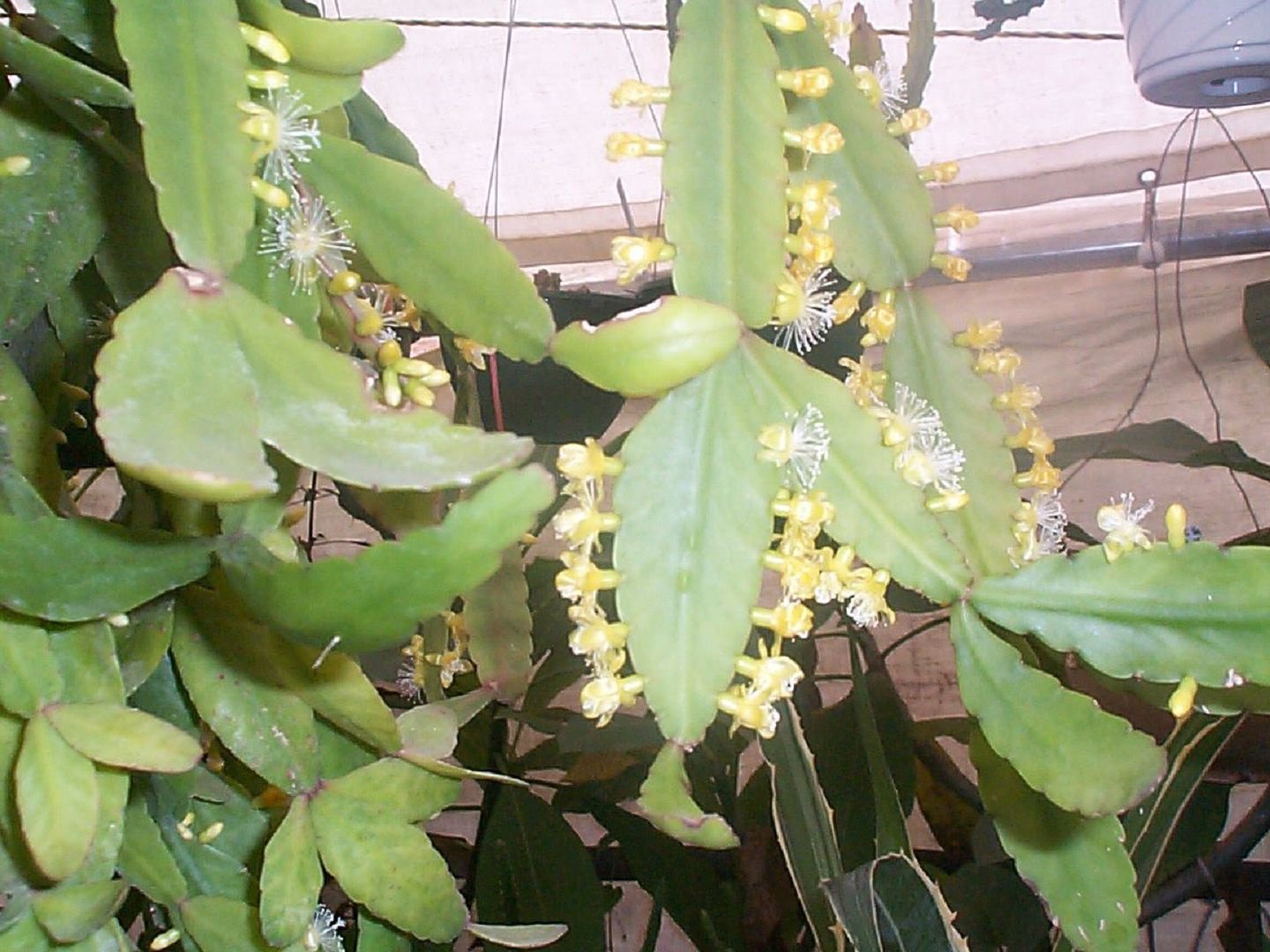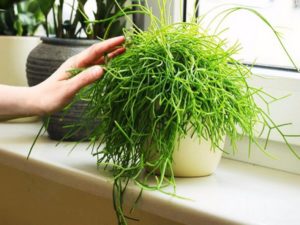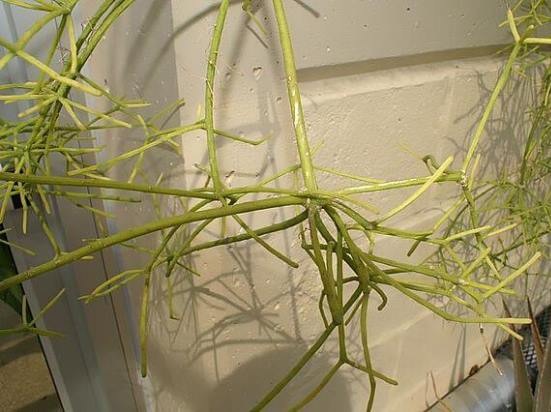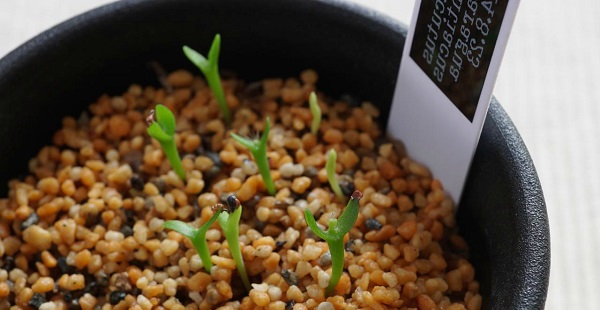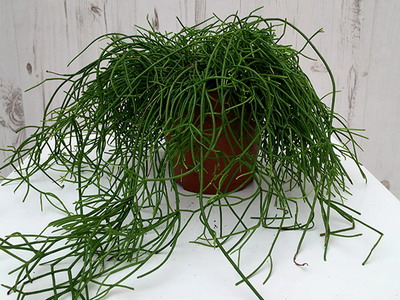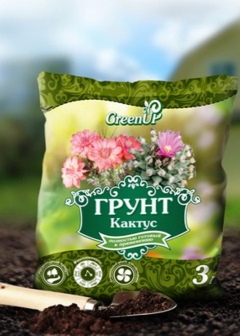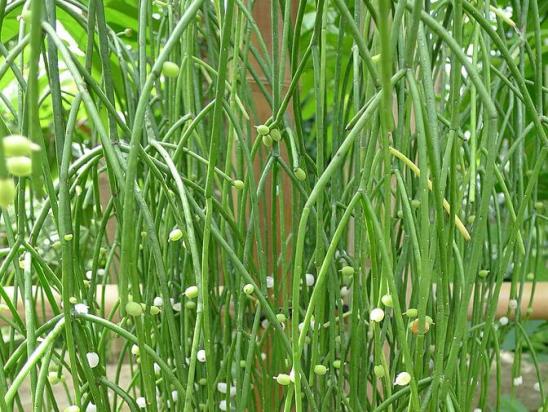Ripsalis: breeding at home
It is customary to use two methods of propagation: by seeds or cuttings. When ripsalis is grown, reproduction at home is more often carried out in the second way.
Important! When using seeds, it must be borne in mind that their germination is rapidly deteriorating. To use them, they need to be planted as quickly as possible.
First, you have to prepare a plastic container where there is peat with the addition of vermiculite. Before planting, the planting material is kept in a solution of potassium permanganate for several hours. When grown in this way, no soil is used.
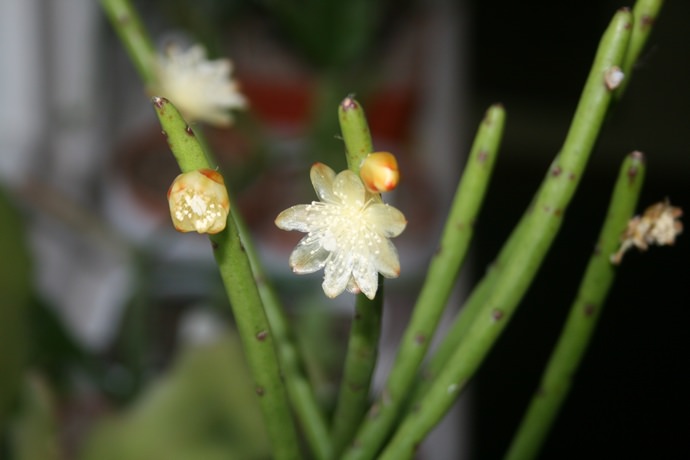
Flower
The mixture is covered with glass or foil and placed in a warm, well-lit place. Seeds need to be looked after, daily airing. The plant is well suited to a temperature of 23-25 ° C. Seedlings should be expected in two weeks. After that, the seedlings of the Ripsalis cactus are transplanted into a pot. In this case, it is allowed to plant several of them together.
To grow with cuttings, you need to cut off a piece of the shoot 2-3 segments long. After that, it is necessary to dry it for 2-3 hours.
Cuttings are germinated in moist sandy-peat soil. Rooting usually occurs within one or two weeks. Then the seedling will begin to actively grow: new segments will begin to form.
Ripsalis characteristics and species diversity
The epiphytic perennial has strongly branching stems, the length of which ranges from 70 to 100 cm. The width of one shoot varies within 3-4 mm. The root system is superficial, therefore, to protect itself from heavy tropical rains, the flower settles on tree trunks. The stems consist of elongated lobes, the shape of which can be ribbed, flattened or cylindrical. The surface of the lobes is covered with smooth green skin.
 Types of ripsalis
Types of ripsalis
Some ripsalis have pronounced areoles, which are covered with soft edges. Each stem forms a fairly large and dense twig. Young plants look like compact bushes, and as the lashes grow, they cascade from the flowerpot. A distinctive feature of the genus is the presence of air roots. During the flowering period, small flowers with a yellow, white, orange or light pink corolla are formed on the stems. After flowering, the plant forms fruits that can be pink, black or white in color.
 You may be interested in:
You may be interested in:
Caring for a houseplant myrtle at home (19 photos) Myrtle was known back in Ancient Greece, whose inhabitants considered it a symbol of happiness. In natural conditions to meet ... Read more ...
Views
Most varieties of Ripsalis can only live in the wild, and only a few can grow indoors. As indoor plants, you can grow species, with a photo and description of which can be found below:
- Ripsalis Barchela forms narrow cylindrical shoots up to 6 cm in length. The size of the primary stems can reach 60 cm. The aerial part is covered with a dark green glossy skin. Small whitish areoles are pronounced on the stems.
- The hairy ripsalis has relatively thin and long lobes. They branch well and wriggle slightly. The appearance of the plant resembles a shock of light green hair. Flexible stems gracefully hang down. In late autumn, the plant blooms profusely with white flowers.
- Rhipsalis pilocarpa is characterized by powerful dark green shoots. The surface of the stems is covered with light yellowish hairs. The specimen is capable of blooming several times a year. Its flowers consist of white petals and rather long stamens, which makes the flowers appear to be covered with pubescence.
- Elliptical ripsalis differs from congeners in flat and wide segments, which are covered with areoles with weak pubescence. The stem can be up to 2 m long. Flowers are formed on the sides of each lobe. Small flowers are light yellow.
- The mesembriantemoidal ripsalis is very similar to a compact spruce bush, because its stems resemble bare branches of a spruce. The shoots are round. Primary segments can grow up to about 20 cm in length, and secondary - no more than 1.5 cm. Lush small flowers are white in color.
Differences between Ripsalis and Hatiora
Rhipsalis and Hatiora belong to the Cactus family. These related plants have a striking resemblance, which is why they are often confused, especially at a young age. As you know, Ripsalis is grown at home as an ampelous plant, the long shoots of which hang beautifully from hanging pots. Its relative forms erect shoots, so it is difficult to confuse adult plants with each other.
 Ripsalis
Ripsalis
The second difference can be seen only upon careful examination of the plants: Ripsalis is characterized by elongated, elongated segments, and the hatiora segments are much shorter.
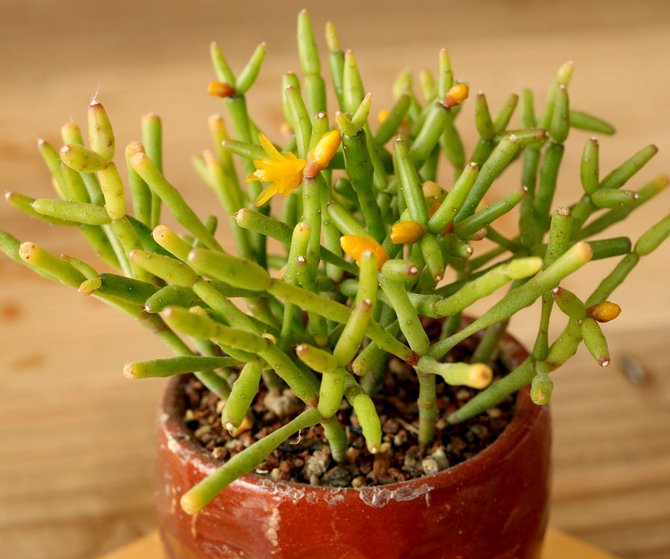 Hatiora
Hatiora
It is easy to identify a plant during the flowering period. The buds of the twig can grow along the entire length of the segment, while the hatiora blooms only at the ends of the segments. In addition, it has larger flowers that are colored yellow, pink or red. Ripsalis flowers are much smaller, their diameter does not exceed 2 cm. Its small flowers can be white or yellowish.
 You may be interested in:
You may be interested in:
Ficus Benjamin: home care, transplantation and reproduction, photo Ficus belongs to the mulberry family, which represents evergreens and looks like a tree or shrub ... Read more ...
Common growing questions
Does Ripsalis have thorns?
The twig is characterized by bare stems, without thorns. Some varieties have soft whitish villi on the surface. The pilocarp twig is covered with yellowish hairs.
What is the best pot to choose?
A pot for a plant should be selected in accordance with natural habitat conditions. The cactus is most often represented by an epiphytic plant that has a superficial root system. In this regard, the pot for it must be selected shallow. The container should be wide and slightly larger than the previous flowerpot.
What is the lifespan of a flower?
In indoor floriculture, with proper care, a flower can live for several decades. Diseases, pests and violation of the conditions of detention become the cause of the death of the twig.
Home cactus is unpretentious to care for, so every flower lover can keep it at home. Ampel varieties will be an excellent decoration for any corner of the apartment, and lush flowering will give green shoots even more decorativeness.
Ripsalis and Hatiora: differences
Hatiora is a plant from the genus Cactus. Its representatives outwardly bear a certain resemblance to Ripsalis. By their appearance, they can be distinguished by the way the shoots grow. In the hatior they are erect, and in the ripsalis they hang down.
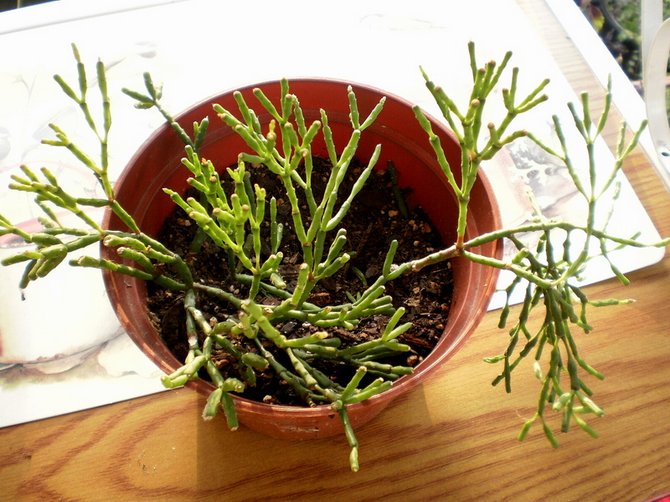 Hatiora
Hatiora
Another difference between Ripsalis and Hatiora is how the flowers grow. In the first, they are present along the entire length of the segment, in the second they grow only at the ends.
Ripsalis cassuta is a very original, beautiful and at the same time unusual flower. It practically does not require complex care, but it is worth controlling some nuances.
Caring for the Ripsalis cactus in indoor conditions (with video)
The varieties of this succulent are unpretentious in care and grow well in indoor conditions. One of the main requirements for environmental conditions is bright diffused light. Ripsalis needs light placement with protection from the midday sun. If the lighting is insufficient, this succulent will not bloom.
Unlike other members of the Cactaceae family, Ripsalis does not tolerate heat well. The optimum temperature for a succulent is 19-25˚С. In summer, the plant can be taken out in the partial shade of the garden, but protected from drafts.
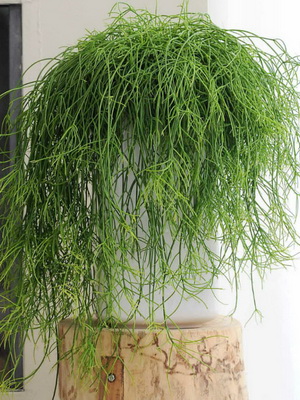
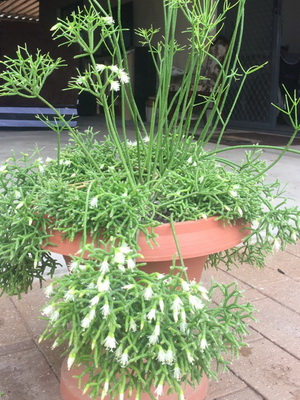
Caring for ornamental ripsalis involves frequent and abundant watering with lime-free water. In hot weather, it is advisable to spray it with liquid at room temperature. From the end of summer and autumn, Ripsalis has a dormant period, during which the succulent is almost not watered. But with the appearance of buds, watering is increased, and the plant is suspended in a warm, well-lit place.
Ripsalis needs proper wintering to "gain strength" before flowering. The temperature in winter should be at least 10-12 ° С. At this time, it is watered only if the top layer of the substrate has become dry.
At home, an important part of caring for Ripsalis is timely feeding. The plant is fertilized with special products for cacti. The main condition is a low nitrogen content in the nutrient complex. It is better to start feeding the succulent in the spring, during the period of its active growth. Fertilize the soil twice a month; in the summer, it is better to carry out such a procedure no more than 1 time in four weeks. In winter, the substrate is not fertilized: this can lead to root rot.

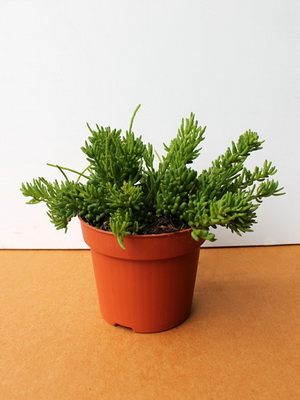
An adult plant is transplanted once every 2-3 years, but a young succulent must be transplanted annually. Choose the right cactus pot: Ripsalis will grow better in a wide and shallow container. The succulent has delicate and rather fragile roots, therefore, when transplanting, they are not shaken off of the old substrate.
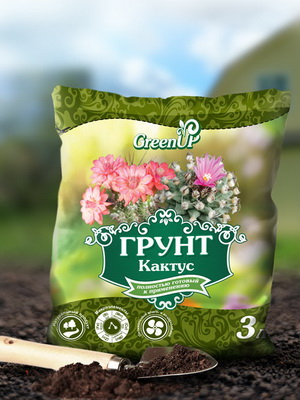
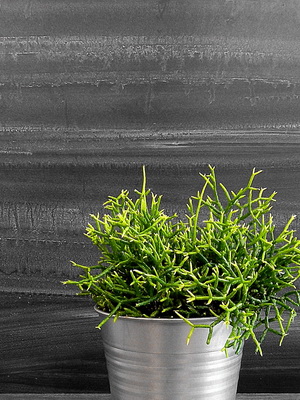
Ripsalis soil can be bought at the store or prepared by yourself. To do this, you will need leaf and sod land, peat, coarse river sand in proportions of 1: 1: 1: 1. The substrate should be loose, with a significant humus content. The soil is steamed to get rid of the larvae of small insects or pests that may be in the soil. A drainage layer must be placed at the bottom of the pot. This procedure is best done in early spring when the succulent plant begins to grow.
You can see the features of transplantation and daily care of Ripsalis in this video:
About harmful insects and diseases of ripsalis
Ripsalis diseases
Chlorosis is quite dangerous for Ripsalis. If the plant "caught" such a disease, then the leaf plates begin to turn yellow, their size becomes too small. Leaves begin to fall off ahead of time. Flowers also vary in size and shape. Ripsalis roots can also be affected by this disease, this can destroy the plant. In order not to face such a problem, it is necessary to observe the correct lighting regime. There shouldn't be too little light, but too much won't be good either. Keep an eye on the pH level in the soil, it should be about five units. Often this problem appears if tap water is used for irrigation. In it, as a rule, acidity is higher than normal and can be equal to seven units.
If you are faced with such a problem as chlorosis, then you need to periodically water the plants with a weak solution of lemon acid. If you try such a solution, then it should only slightly acidify. From time to time, you need to make dressings that contain a chelated form of iron. It is in this form that the absorption of iron occurs more actively. Such dressing should be applied by foliar method, that is, "on the sheet".
Ripsalis pests
The greatest danger to this culture is the scale insect and spider mite. If you find adult scale insects on a plant with the naked eye, then they must be removed with a stick and cotton wool smeared with soapy water or alcohol. The fact is that already matured scale insects are not afraid of chemicals due to their strong shell. The same goes for their eggs. After the adults are removed, rinse the plant thoroughly with a warm shower.Ripsalis should dry completely after that. Further, it is imperative to carry out treatment with insecticides. This is done by spraying. To do this, you can use Fitoverm, Aktellik or Aktara. There are other similar products in garden stores. If the plant contains too many harmful insects, then prepare for repeated processing. After a single treatment, most likely the problem will not be resolved.
As for the spider mite, this pest occurs when the indoor air is dry. Ripsalis is quite picky about high levels of air humidity. For this reason, this condition must be observed so that the spider mite does not annoy your plant. Upon detection of this pest, it is necessary to correct the situation with humidity and increase it to the desired level. First, you can pour a warm shower over the plant, after which you need to spray the air near the flower from a spray bottle every day.
If the air humidity is high, then such a pest as a spider mite simply cannot survive. But if there are too many mites on the plant, then just an increase in humidity cannot be avoided. In this situation, the plant is also poured with a warm shower, and then treatment is carried out by spraying with acaricide. Most often, for this purpose, flower growers use Kleschevit, Aktellik, Apollo, Aktara.
Ripsalis: video
Ripsalis plant species
There are 60 types of ripsalis. Their characteristics are different.
Pilocarpa
This variety stands out among others for its powerful dark green shoots. On the superficial part of the lobes, many areoles with long yellow hairs are formed. Rhipsalis pilocarpa is capable of blooming repeatedly throughout the year. The inflorescences of this species are yellow in color. Long stamens make the flowers look fluffy.
Elliptical
This plant has dark green shoots that are flat, which is reflected in its name. The stems are usually 1–2 m long. The segments are covered with areoles, which are slightly pubescent. Light yellow flowers grow along the lateral edges. They have a weak edge.
Gnarled
The stem segments of this plant have a cylindrical shape. Their diameter is 2-3 mm, and the length is 5 cm. In this variety, the length of the whips can reach 1 m.
Signs and superstitions
Many signs are associated with this cactus, and most of them promise not the most pleasant changes. For example, it is believed that because of him families break up and some esotericists do not advise keeping him in rooms in which a man spends a lot of time. There is no reason to comment on the situation in which superstition triumphs over common sense, as well as information that ripsalis is poisonous.
If there are already kids, big purchases or replenishment of the wallet are waiting for the family. By putting ripsalis in the hallway, you will protect it from bad people and negativity.
It is also believed that cacti kill the sexual attraction of partners to each other, and males begin to reach for the bottle: the more flowers appear on the plant, the more deeply a person drinks. If you want to give a cactus, choose a flowering one with soft thorns, otherwise your relationship with a person will deteriorate. When choosing where to put a cactus, consider:
- Standing on the desktop, the cactus will absorb fatigue and irritation;
- In the kitchen - energy from family disagreements and quarrels;
- A cactus growing in the hallway will scare away bad people from your doorstep.
Description
- In nature, Ripsalis settles on trees and tall shrubs so as not to soak its roots, which are located almost at the surface of the soil.
- This plant is formed by shoots on which small and elongated lobes are located. Each species is represented by a different shape of the lobes: in some it is ribbed or bottle-shaped, in others it is cylindrical, and maybe even flattened. Each lobe is covered with a leathery surface, it is smooth and has a bright green tint.
- In many species, the lobes are covered with villi, they are soft, whitish in color.
- The shoots are large due to the fact that all the lobes are collected in whorls. If the stem diameter is only 2.5-4 mm, then the length reaches one meter. In those places where the lobes are connected, air roots are formed.
- Flowers can form on the tops of the lobes, or on the lateral parts of the lobes. The shape of each single flower is represented by a bell.
- The petals of the flower are pinkish, yellowish or snow-white. These cacti bloom from October to January.
- After pollination, tiny berries are formed. They are covered with sticky soft pile.
Different types
There are 60 species in the family of this culture. Most of the ripsalis can only live in their natural habitat.

Only a few species have been cultivated:
- Barcela Ripsalis: grows into a compact bush. The shoots are narrow, cylindrical in shape with a diameter of up to 2 mm, the shoot length is only 6 cm. Their surface is covered with thin skin of a dark green color.
- Hairy Ripsalis: The bush can be compared to a shock of hair, with a light green coloration. The shoots are thin and elongated, twist a little and hang down from the container. In November, the entire bush is covered with a large number of white flowers.
- Pineal Ripsalis: each small, only up to 5 cm in length, the shoot is in the form of a cylinder or bottle. Young shoots first grow upward, then they begin to droop under their own weight. Shoots can grow up to one meter in length.
- Prismatic Ripsalis: The bush consists of several stems. All of them are low, up to 15 cm in height, erect and have the shape of a cylinder. At the top of the flower are whorl shoots with three or five faces. When such a cactus blooms, the whole bush is covered with snow-white flowers.
- Cassuta Ripsalis: The bush consists of thin, cylindrical shoots. The color of the shoots is light green. Shoots can grow up to three meters in length, and lobular parts grow up to 20-50 cm. Whitish flowers are formed at the tips of branches.
- Pilocarpa ripsalis: numerous lobes are located on the shoots. Bundles of yellowish hair grow on each lobe. This type of cactus blooms several times a year. Yellow flowers are small, due to the large number of long stamens, they seem to be fluffy balls.
- Elliptical Ripsalis: A shrub with long shoots that can grow up to two meters. The lobes are flat, in the shape of an elongated ellipse. Light yellow flowers bloom along the lateral parts of the lobes.

Pests and diseases
Diseases rarely affect Ripsalis and almost always through an oversight of the owner.
- The coloring of the edges of the segments in yellow, pallor and growth retardation indicate a lack of light.
- Have the shoots lost their elasticity and brightness? You obviously flooded your cactus and the roots began to rot. Try to heal it: take it out of the pot and cut off the damaged areas with a sharp blade, sprinkle the cut with crushed activated carbon and transplant the plant into a fresh substrate. Such a procedure is quite often for the good of ripsalis.
- If the ripsalis flower dries up, its leaves decrease in size and fall off, the shape of the buds changes - it was struck by chlorosis. The cause of the disease may be a lack of nutrients (magnesium, iron, nitrogen, sulfur, calcium), an improperly selected substrate, or the use of poor quality water for irrigation. Transplant the plant into a new soil with an acidity of 5-5.5 pH and water with water with the addition of citric acid, and from time to time treat the ground part with fertilizer with iron in a chelated form.
Of the pests, the most common are red spider mites and scale insects. First, remove all the pests with a cotton swab dipped in soapy water, then rinse the flower in the shower and let it dry.
The next stage: treatment with either a folk remedy or a special preparation. If there are few insects, try the first option.For example, a decoction of cyclamen roots (50 g per 500 ml of water) or an infusion of onions (200 g of onions per bucket of warm water, leave for 12 hours, strain and immediately process). A good effect from an alcohol solution, specifically, ammonia, which only needs 30 ml (they do not spray the leaves with it, but wipe the affected areas).

